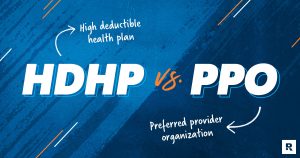Tim Robberts / Getty Images
Key takeaways
- Upgrading or downgrading your Chase credit card responsibly may be a good option if your spending goals change.
- Upgrading to premium cards like the Chase Sapphire Preferred® Card or Chase Sapphire Reserve® may be beneficial for travel rewards.
- Downgrading to cards like Chase Freedom Flex®* or Chase Freedom Unlimited® can help you meet specific spending needs — for instance, downgrading to a card with no annual fee.
- When downgrading or upgrading cards, timing is important to avoid paying unnecessary fees.
Over time, your credit card spending goals will likely change, and you might want to apply for a new credit card to get new benefits or rewards. Before you apply for a new card, you should consider upgrading or downgrading your existing account (also known as a product change) with your current issuer. With an upgrade or downgrade, there’s no hard credit inquiry, you’ll keep your same account information and you’ll get to maintain your credit history — the only change is the type of card you’ll have.
If you’re looking to upgrade or downgrade your Chase credit card, Chase offers its cardholders a variety of options, with more than 30 credit cards and co-branded credit cards advertised on its website. So, whether you’re a student, traveler or business person, there’s a card for you. Just make sure that you meet Chase’s eligibility requirements for the new card. To confirm if you’re able to upgrade or downgrade your card to your desired choice, simply contact Chase to get started.
However, note that you’ll generally have to switch to a card in the same category or credit card family if you want to do a product change. For example, you can’t change from a personal card category to a business card category. This is also true for Chase’s co-branded credit cards, such as the Marriott Bonvoy Boundless® Credit Card*. So, you could switch this card with another Chase Marriott card, but not with a different co-branded card.
Below, we’ll explore what you need to know about Chase’s product change options and how to make a switch.
Should you upgrade your Chase credit card?
Upgrading to Chase Sapphire Preferred Card or Chase Sapphire Reserve
The Chase Sapphire Preferred Card and Chase Sapphire Reserve are two of Chase’s premium credit cards, and they’re best known for their generous travel rewards. If your spending goals are focused on travel, upgrading or switching to one of these cards is a great idea. Another reason to upgrade is if you are interested in a different Chase card, but already have opened five or more new credit card accounts during the last 24 months. In that case, you’d fall under Chase’s “5/24 rule,” an unofficial rule that says Chase doesn’t approve card applicants who have opened five or more cards from any issuer in the past 24 months.
Benefits of upgrading
- Better rewards. The Chase Sapphire Preferred offers: 5X points on travel purchased through Chase Ultimate Rewards, 5X points on Lyft rides (through March 31, 2025), 3X points on dining, select streaming services and online grocery purchases (excluding Walmart, Target and wholesale clubs), 2X points on other travel purchases and 1X points on all other purchases. Alternatively, the Chase Sapphire Reserve offers: 10X points on hotel stays and car rentals through Chase Ultimate Rewards, 10X points on Chase Dining purchases through Ultimate Rewards, 10X points on Lyft purchases (through March 2025), 5X points on air travel through Ultimate Rewards, 3X points on general travel and restaurant purchases and 1X points on all other purchases.
- Travel perks. Both of these cards come with premium travel perks. With the Sapphire Preferred, you’ll get perks like trip cancellation and interruption insurance, baggage delay insurance, a trip delay reimbursement, 1:1 points transfers to Chase travel partners and no foreign transaction fees. The Sapphire Reserve comes with benefits like up to $300 in annual credits for qualifying travel purchases, more extensive travel insurance, Priority Pass Select membership (with access to more than 1,300 airport lounges), 1:1 points transfers and up to a $100 application fee credit for Global Entry, TSA PreCheck or NEXUS, among numerous other benefits.
- Rewards boost for travel redemptions. The Sapphire Preferred offers a 25 percent points boost for travel redemptions through Chase Ultimate Rewards, whereas the Sapphire Reserve offers a 50 percent points boost for travel redemptions through Ultimate Rewards.
Disadvantages of upgrading
- Annual fees. The Sapphire Preferred has an annual fee of $95, while the Sapphire Reserve comes with a much higher annual fee of $550.
- Travel focused. Although the Sapphire Preferred and Sapphire Reserve offer higher rewards rates in many common everyday categories, these rewards cards are still best for frequent travelers since their rewards and perks are more travel-focused. Also, redeeming your points for cash back or gift cards will not yield as much value as using them for travel (especially through Chase’s portal).
- No welcome bonus. As an existing cardholder, you’ll miss out on the great welcome bonuses offered to new cardholders. For example, the Sapphire Preferred currently offers new cardholders the chance to earn 60,000 bonus points after spending $4,000 in the first three months from account opening. The Sapphire Reserve offers 60,000 bonus points after spending $4,000 in the first three months.
How to upgrade your Chase card
Upgrading your current Chase card to either the Sapphire Preferred or Sapphire Reserve — or upgrading from the Sapphire Preferred to the Sapphire Reserve — can be as easy as making a phone call to Chase. Upgrading is generally considered to be a product change, so it shouldn’t require a hard inquiry or a new application. However, you will need to meet the conditions for the card you’re upgrading to. For example, upgrading to the Sapphire Reserve requires an excellent credit score.
When you upgrade, you’ll likely keep your same account information and credit limit. If you want to request an increase to your credit limit, different steps are required. It’s also important to note that you won’t be eligible for any sign-up bonuses, although you may be able to negotiate a targeted offer when you request your upgrade.
Should you downgrade your Chase card?
Downgrading to Chase Freedom Flex or Chase Freedom Unlimited
Downgrading your credit card may sound like an unappealing option, but it can offer a lot of benefits. You want to make sure that the card you have is meeting your spending needs, and a downgrade may help with that. Two options you may want to consider include the Chase Freedom Flex* or the Chase Freedom Unlimited.
Benefits of downgrading
- No annual fee. The Chase Freedom Flex and Chase Freedom Unlimited are available for no annual fee. If you currently have a Chase card with an annual fee, you may want to consider downgrading your card if you’re not making up for the cost of the annual fee in rewards and perks.
- Everyday rewards earnings. The Chase Freedom Flex offers: 5 percent cash back on activated bonus category purchases each quarter (on up to $1,500 in purchases, then 1 percent), 5 percent cash back on Chase Ultimate Rewards travel purchases, 5 percent back on Lyft rides (through March 31, 2025), 3 percent back on dining and drugstore purchases and 1 percent back on all other purchases. Alternatively, Chase Freedom Unlimited offers: 5 percent cash back on Lyft purchases (through March 31, 2025), 5 percent back on travel purchased through Chase Ultimate Rewards, 3 percent back on dining and drugstore purchases and 1.5 percent back on all other purchases.
Disadvantages of downgrading
- Fewer rewards. In exchange for not paying an annual fee, you’ll get fewer rewards and more restrictions. For example, the Freedom Flex offers a generous 5 percent cash back on rotating categories each quarter, but that’s limited to $1,500 in spending each quarter. Plus, the quarterly categories require activation in advance, which can be more inconvenient for some cardholders.
- Foreign transaction fees. The Freedom Flex and Freedom Unlimited both charge a 3 percent foreign transaction fee. If you plan on traveling abroad, it would be better to use a card that doesn’t charge a foreign transaction fee.
- No welcome offers. Since you’re not submitting a new application, you won’t be eligible for the Freedom Flex’s and Freedom Unlimited’s welcome offers. The Freedom Flex offers new cardholders a $200 cash bonus after spending $500 within the first three months, while the Freedom Unlimited offers an additional 1.5 percent cash back on top of all purchases’ original cash back rates for the first year (on up to $20,000; offer through Bankrate).
How to downgrade your Chase card
The process of downgrading your card begins the same way as upgrading. Simply call your issuer at the number on the back of your credit card to get started. Because downgrading doesn’t involve an increased annual fee, you shouldn’t have to deal with a waiting period. And if you complete your product change within 30 days of paying the annual fee on your old card, your fee will likely be refunded.
When downgrading your card, you won’t be eligible for welcome offers. However, you can try to negotiate a targeted offer with the issuer. Also, before you go through with a downgrade, make sure you know what will happen with any rewards you’ve earned.
How to make the most of your upgrade or downgrade
Whether you’re planning to upgrade or downgrade your Chase credit card, there are some aspects to keep in mind to make the most of the transition. Most importantly, make sure you are changing to a card that better suits your spending habits and rewards goals. Here are a few other things to do to get the most out of your product change.
-
Timing is everything when you are switching from one card to another. If you are moving to a card with a lower annual fee or no annual fee, make sure you change within a certain time frame to avoid paying the fee for the old card.
-
You have likely accumulated rewards on your current card that you would like to keep. When you transition to a new card, make sure you have a clear understanding of how your rewards will be transferred. Your rewards will likely transfer to your new card, but their value might shift.
-
When you apply for a new credit card, there is often a welcome offer that comes along with it. However, when you do a product change, you are not automatically eligible for a bonus offer. Check with your card issuer to see if you can negotiate a targeted bonus offer. Sometimes, card issuers will be open to this option to keep you as a customer.
The bottom line
If your current Chase card is no longer meeting your needs, upgrading or downgrading your card could be a worthwhile option. Do some research to see which Chase credit card would be best for you and your spending habits, and make sure you meet all of Chase’s requirements. Then, simply call your issuer to request a product change or switch.
*The information about the Chase Freedom Flex® and Marriott Bonvoy Boundless® has been collected independently by Bankrate.com. The card details have not been reviewed or approved by the card issuer.
Read the full article here












